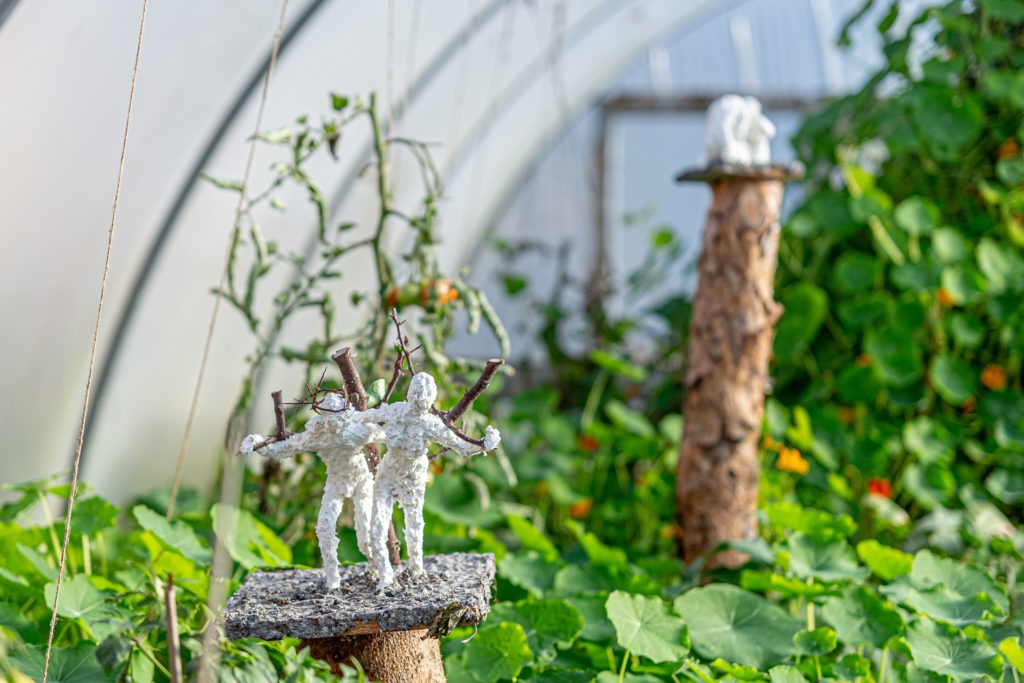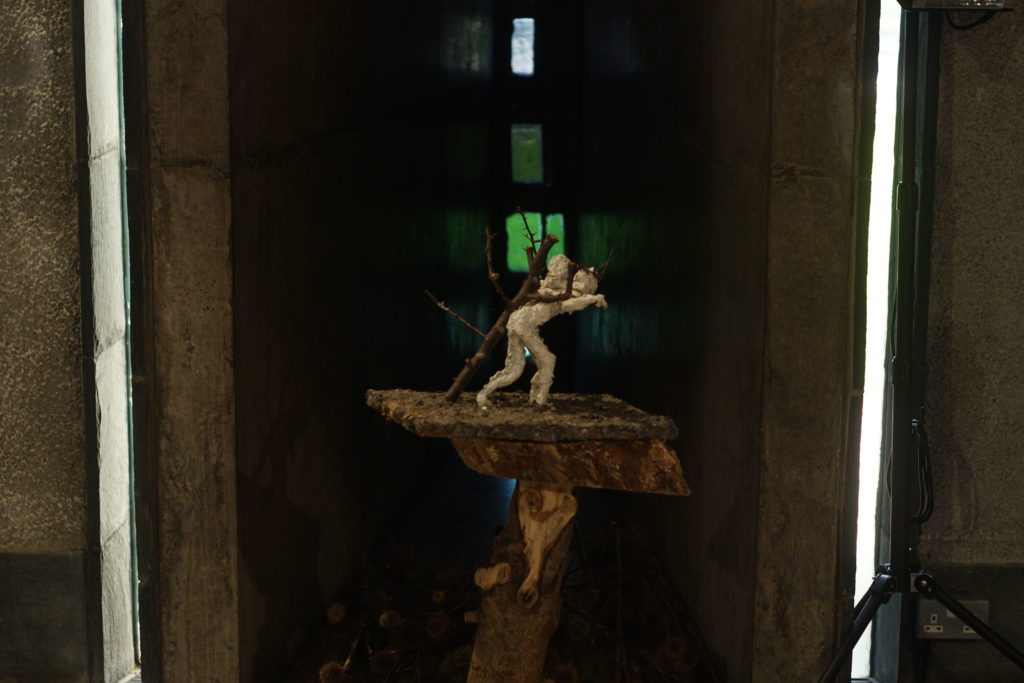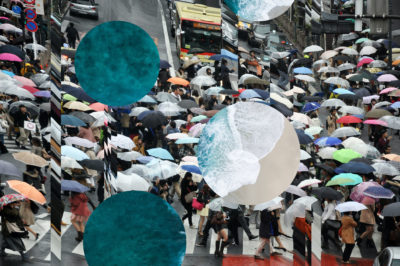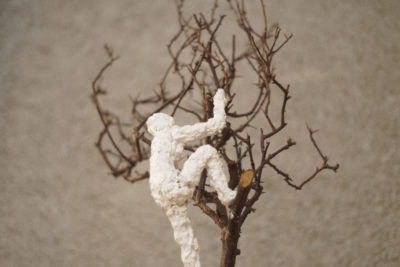Read this article in the limited edition print version: order a copy here.
Lya Vollering, from the Minsteracres Eco-Community, recently created a series of sculptures to accompany psychotherapist Tony Wright’s book comPASSION: Stations of the Cross for Adult Survivors of Childhood Abuse. Below, she explains some of her process.
You can see Lya’s sculptures in the Chapel of Unity at Coventry Cathedral until 1st April, after which they will be exhibited at Hexham Abbey.
When I was a child, I would go with my mum to the Good Friday service in the Gothic church. As I recall it now, I found the service quite boring. The priest would go round the 14 stations of the cross, accompanied by a few altar servers. We would stay in the pews and do the responses. After we (or rather the priest) had finished the stations, we could venerate the cross by putting flowers at the foot of it. I always liked that bit; such a variety and richness of colour. The flowers would then be used for the Easter decorations. The biggest treat for me was that I was allowed to help my big sister and other volunteers to do the flower arrangements. I have never got used to venerating the cross by kissing the feet of a wooden figure, as is the custom here in the UK.

Did I, as a child, understand the suffering Jesus went through? Probably not. Do we now, as adults? Probably not either. It is really difficult to look suffering in the eye, particularly if we can’t do anything to alleviate it. Mary was incredibly courageous for standing there at the foot of the cross with her suffering son.
When writing the book ComPASSION, psychotherapist Tony Wright asked me to make illustrations for his stations of the cross. Tony’s description of what happened to Jesus is very powerful. It is not something you can read in one go; it’s too painful. It takes time and courage to really allow the suffering that Jesus went through to enter into our understanding of head and heart.
It is not only the suffering that was inflicted on him by an occupying force; it’s also the suffering inflicted by his own people, his own ‘church’, when he was abandoned and betrayed by those who were nearest to him. To get a better understanding of what happened to him is very powerful.
“It takes time and courage to really allow the suffering that Jesus went through to enter into our understanding of head and heart.”
By connecting Jesus’ suffering with the suffering of adult survivors of childhood abuse, Tony brings out even more powerful depths of understanding.
His book is a very difficult read; but if we, as church people, want to come to grips with abuse that has happened in the church —and is still happening, because of the lack of accountability of the church authorities—we need to read it, to understand it and to acknowledge it.

In the winter of lockdown I made 15 sculptures based on Tony’s text about the survivors of abuse. They are female figures, naked and made out of toilet paper and PVA glue. Everything about them is vulnerable and broken.
The station where Jesus meets Mary is a figure curled up, alone. For survivors often there was nobody there. People close to them were often involved in the abuse, or at least turned a blind eye. The women of Jerusalem are in front of a mirror; they only see themselves, caught up as they are in their own problems.
The sculptures have been exhibited in the poly tunnel of the walled garden of Minsteracres Retreat Centre. Nature has added to it. Behind the third fall is a decaying plant. Little spiders have woven webs on the figures. Birds sat on them, and have left deposits. The second fall particularly is covered in bird poo. She literally is in the ‘shit’.
If we, as church people, want to come to grips with abuse that has happened in the church—and is still happening—we need to understand it and acknowledge it.
The sculptures have touched people in different ways. It has spoken about suffering in a wider context—not just childhood abuse, but also the isolation during the pandemic, the burden of the environmental crisis we are in, the poverty and widening gap between rich and poor.
The sculptures are going to be exhibited in Hexham Abbey and in Coventry Cathedral during Lent. My hope is that these stations of the cross will help people to put their suffering (or the suffering of their loved ones and of the crucified earth) alongside Jesus’ and know that He is with us. May we draw strength from His presence. May it help us to see the suffering of the earth and others and reach out. ·
Related Stories

Experiences of Passionist prayer, pt. 3: Joanne Crompton
How do we pray? What role does prayer take in our lives? We asked three people pursuing a Passionist spirituality how their sense of prayer has changed over time.
Jul 05 2023

Experiences of Passionist prayer, pt. 2: Bishop William Kenney
How do we pray? What role does prayer take in our lives? We asked three people pursuing a Passionist spirituality how their sense of prayer has changed over time.
Jun 24 2023

Experiences of Passionist prayer, pt. 1: Michael O’Halloran
How do we pray? What role does prayer take in our lives? We asked three people pursuing a Passionist spirituality how their sense of prayer has changed over time.
Jun 18 2023




